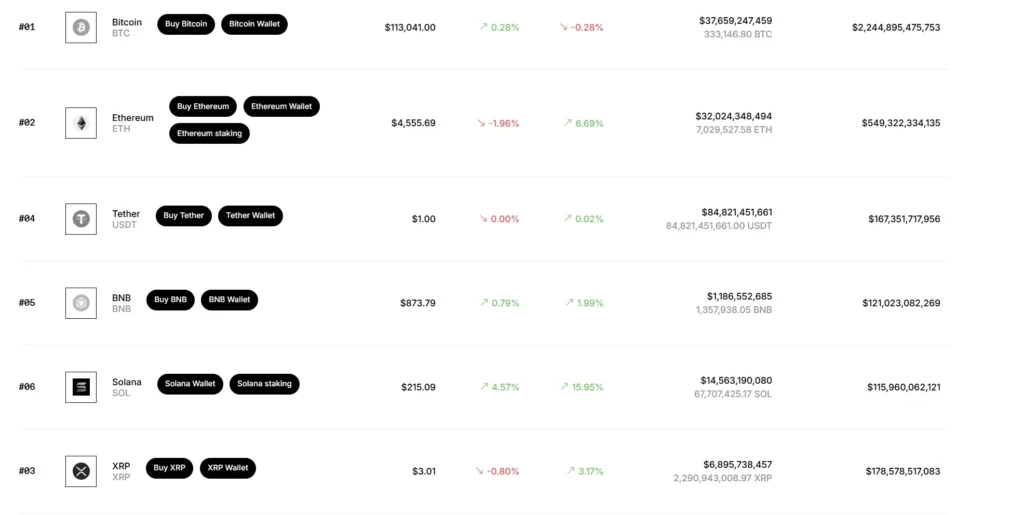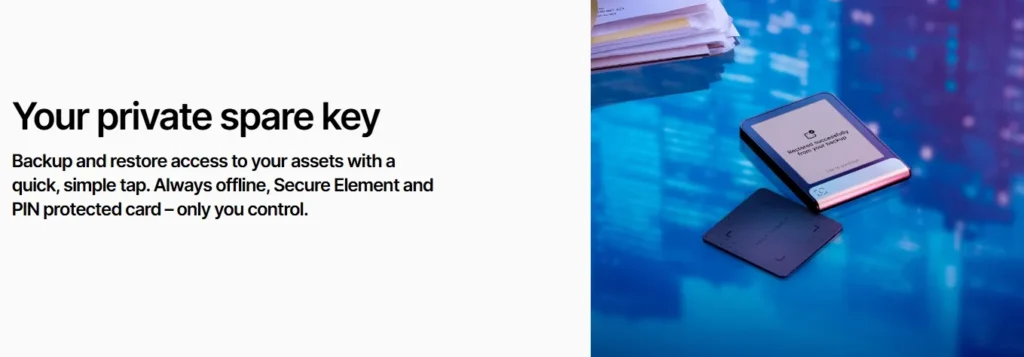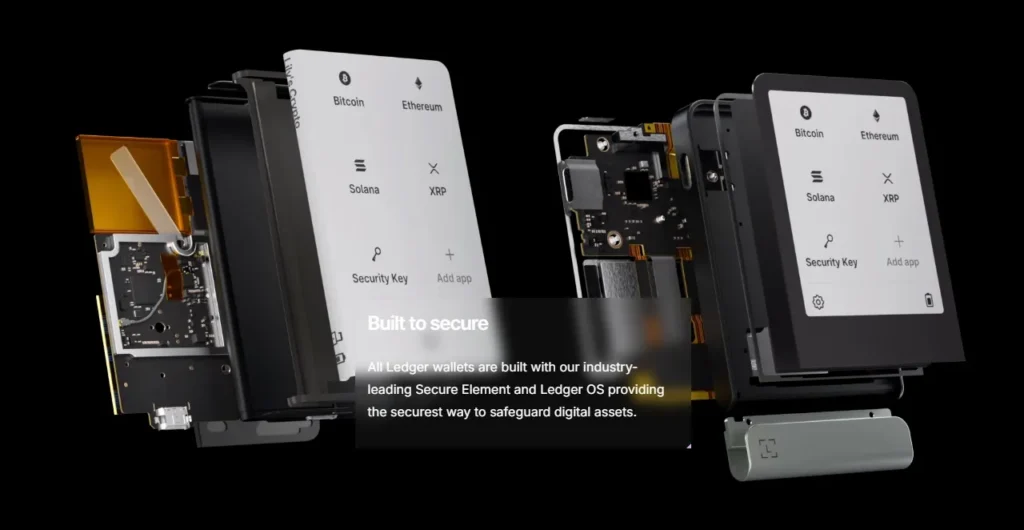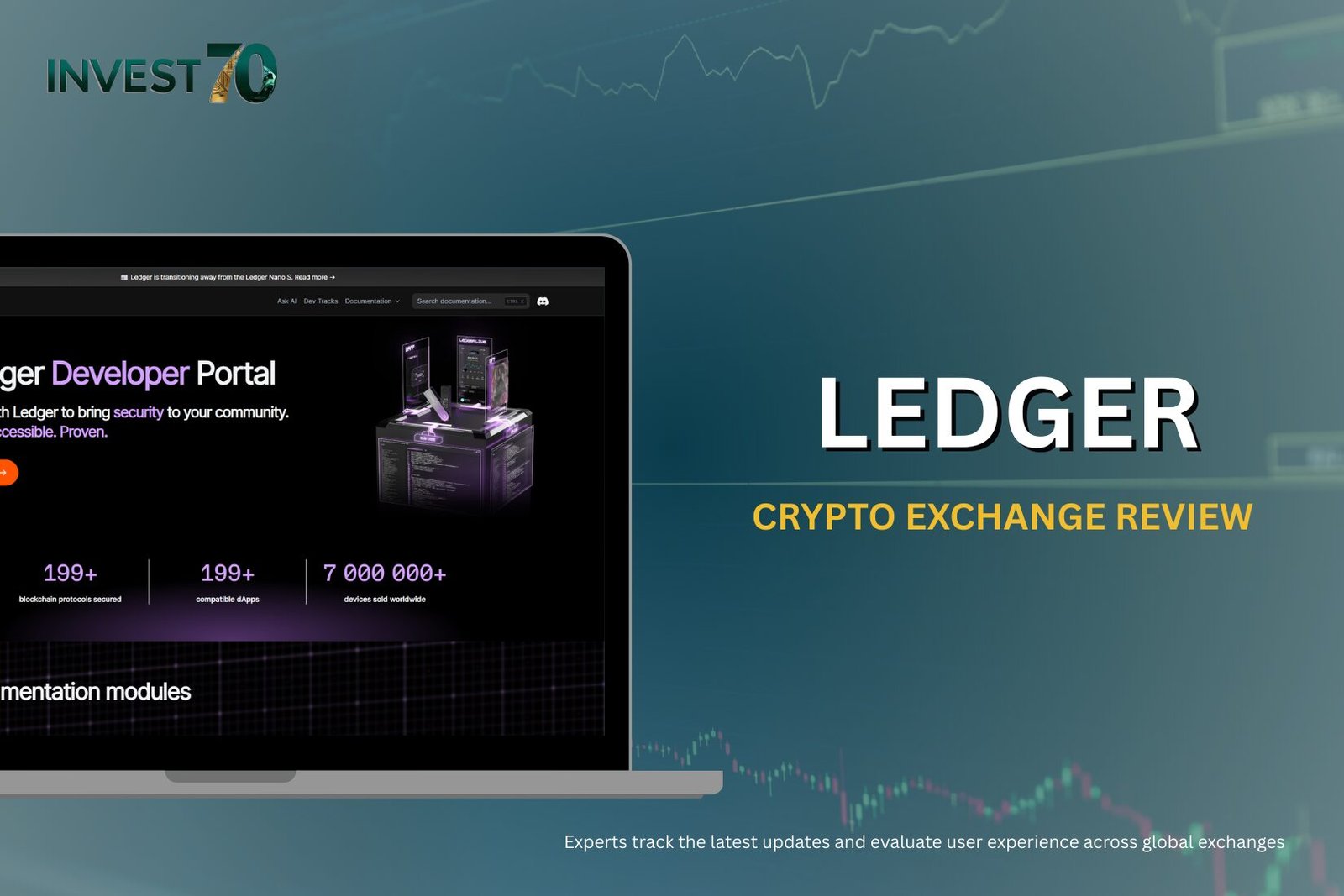Ledger Exchange Review 2025: Security, Features, and Market Position
In 2025, security in the crypto industry is still one of the biggest pain points. Every month, news breaks of exchange hacks, phishing scams, or wallets being drained because of poor security practices. Investors are no longer just asking how much they can earn from crypto; they are asking how safe their money really is. This is where Ledger exchange review discussions become important. Ledger, a pioneer in hardware wallets, has built a reputation for protecting assets offline while offering tools to connect with exchanges. Yet the question remains: does Ledger still set the benchmark for safety, or have competitors caught up?
Key Takeaways
- Ledger combines hardware-level security with exchange integration.
- It charges more than free software wallets, but the value is in protection.
- Features include multi-chain support, staking, and NFT compatibility.
- Perfect for long-term investors, less ideal for frequent traders.
Ledger Exchange Review: Background and Evolution
Ledger was founded in 2014 in Paris and quickly gained recognition as one of the most trusted names in crypto security. Its flagship products, the Ledger Nano S and Ledger Nano X, allowed users to store their private keys offline, reducing exposure to online threats. Over time, Ledger expanded beyond being “just a wallet.”
The introduction of Ledger Live turned the company into a complete ecosystem. Investors could now buy, sell, and stake cryptocurrencies while keeping their private keys secured inside the hardware. In addition, Ledger added support for NFTs and DeFi integrations, making it more than a simple storage device. As a result, the brand carved out a unique position: not an exchange itself, but a secure gateway for exchange access.
Pricing and Market Positioning

When evaluating Ledger, cost is one of the first considerations. The Nano S Plus retails at around USD 79, while the more advanced Nano X costs approximately USD 149. Compared to free software wallets, this may look expensive. However, Ledger’s pricing must be viewed in context. For someone managing crypto worth several thousand dollars, a one-time hardware cost is a form of insurance.
| Wallet / Exchange | Pricing | Security | Supported Assets |
|---|---|---|---|
| Ledger Nano X | USD 149 | Offline, hardware-level | 5,000+ coins & NFTs |
| Trezor Model T | USD 219 | Offline, hardware-level | 3,000+ coins |
| Coinbase Wallet | Free | Hot wallet, custodial | Wide range but centralized |
This table highlights how Ledger balances affordability and functionality. In contrast, exchanges like Coinbase are free but carry custodial risk, while alternatives like Trezor cost more.
Ledger Exchange Review: Key Features

Ledger’s ecosystem stands out because of its versatility:
- Ledger Live Integration: Lets users trade and stake directly, while keys remain offline.
- NFT Support: Users can view and manage NFTs natively.
- Multi-Chain Coverage: From Bitcoin and Ethereum to Solana and thousands of altcoins.
- Ledger Recovery Key: Provides a backup system for account restoration.
- Staking Access: Allows users to earn rewards securely.
Moreover, Ledger frequently rolls out software updates, ensuring compatibility with new tokens and emerging services. This forward-looking approach reassures investors that their devices will remain useful for years.
Pros and Cons

Pros
- Market-leading hardware security
- Wide range of supported assets and NFTs
- Integration with DeFi and exchanges
- User-friendly Ledger Live platform
- Strong reputation and support
Cons
- Higher upfront cost than software wallets
- Slower for high-frequency trading
- Responsibility for recovery phrases
Step-by-Step Guide: Using Ledger with an Exchange
- First, purchase and set up your Ledger device (Nano S Plus or Nano X).
- Next, download Ledger Live and install apps for your chosen cryptocurrencies.
- After that, link Ledger Live with a supported exchange partner.
- Then, transfer funds from the exchange into your Ledger-secured wallet.
- Finally, confirm transactions on the device, ensuring maximum security.
As a result, users maintain full custody of their assets while enjoying exchange-level convenience.
Security and Risk Analysis

Security remains Ledger’s strongest point. Private keys never leave the hardware device, and every transaction requires physical confirmation. Therefore, even if malware infects a computer, the assets remain safe.
Nevertheless, risks do exist. In 2020, Ledger suffered a data leak exposing customer information, though wallets themselves were unaffected. This event highlighted that while hardware security was intact, user privacy still required caution. Consequently, investors are advised to remain alert to phishing scams and never share recovery phrases.
Who Should and Shouldn’t Use Ledger

Ledger is well suited for investors holding significant crypto portfolios who want hardware-level security without sacrificing access to exchanges. NFT collectors also benefit since Ledger supports NFT storage and display. DeFi users, too, will find Ledger valuable because it allows participation in decentralized finance while keeping keys offline.
On the other hand, Ledger may not suit beginners unwilling to spend on hardware. High-frequency traders could find it inconvenient, since approving every transaction on the device adds friction. In addition, users uncomfortable with managing recovery keys may prefer custodial solutions where responsibility lies with the service provider.
Alternatives to Ledger

The crypto wallet market is crowded, and Ledger faces strong competition. For example, Trezor offers similar offline protection but costs slightly more. SafePal is cheaper but lacks Ledger’s ecosystem depth. Custodial options like Coinbase appeal to beginners due to simplicity, but they expose users to third-party risks.
In comparison, Ledger strikes a middle ground: more affordable than some hardware rivals, yet far safer than leaving funds on exchanges. Thus, it remains a unique proposition for those who value both security and usability.
Conclusion: Is Ledger Still Worth It in 2025?

Ultimately, this Ledger exchange review shows that Ledger continues to define the standard for crypto security. While it requires an upfront investment, the combination of hardware protection, multi-chain support, and seamless exchange integration makes it one of the most reliable choices available. Therefore, for serious investors aiming to safeguard their digital wealth, Ledger is not simply a device—it is an insurance policy in an unpredictable market.



